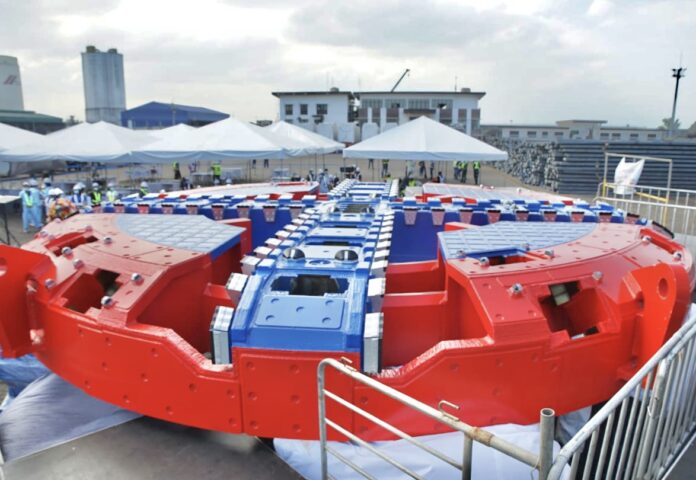
-
The remaining main parts of the two tunnel boring machines (TBM) to be used to construct the Philippines’ first ever underground railway system were transported to a Quezon City stockyard on April 22
-
Actual excavation and digging works for the Metro Manila Subway Project (MMSP) are expected to start before yearend
-
The two TBMs are part of the six to be used in the partial operability section of the MMSP
-
The 36-kilometer subway project aims to ease traffic congestion, meet fast-rising transport demand, and reduce air pollution in the country’s premier urban center
The remaining main parts of the two tunnel boring machines (TBM) to be used in the construction of the Philippines’ first ever underground railway system were transported to a stockyard in Quezon City on April 22, according to the Department of Transportation (DOTr).
Most of the main parts of the two TBMs are now at the Metro Manila Subway Project (MMSP) Stockyard in Tandang Sora, Quezon City, DOTr said in a statement.
The minor parts and some accessories, meanwhile, have been placed in a warehouse in Valenzuela City.
The actual excavation and digging works for the MMSP are expected to start before the year ends.
The two TBMs, named “Kaunlaran” and “Perlas ng Silangan,” are part of the six TBMs to be used in the partial operability section of the MMSP. A total of 25 TBMs will be utilized for the whole MMSP project.
READ: Cutter head of tunnel borer for MM subway arrives
The MMSP is the first underground railway system in the country that will provide the most modern mass transportation in the National Capital Region (NCR). It will stretch from Valenzuela City to Food Terminal Inc., Parañaque, and Ninoy Aquino International Airport (NAIA) Terminal 3 in Pasay, and will further extend across the north and south zones of the Greater Capital Region.
The TBMs will be used to dig underground and lay out the tunnels. They can excavate through a variety of ground conditions, from hard rock to sand.
On February 20, 2019, DOTr and Japanese firm Shimizu Corp. signed the contract that was awarded to the joint venture of Shimizu, Fujita Corp., Takenaka Civil Engineering Co., Ltd., and EEI Corp.
The joint venture will design and build the subway’s partial operability section.
The 36-kilometer (km) subway project aims to ease traffic congestion, meet fast-rising transport demand, and reduce air pollution in the country’s premier urban center.
The first phase of the MMSP will be constructed using cutting-edge Japanese tunneling technology and a JPY104.53 billion (about P49.11 billion or US$943.34 million) loan from Japan.
The first phase will stretch from Mindanao Avenue in Quezon City to FTI in Taguig, before continuing on to NAIA.
DOTr earlier said that since Metro Manila’s weather and seismic conditions are very similar to those of Japan’s, the MMSP is employing proven Japanese technologies to make the railway system resilient to natural disasters.




